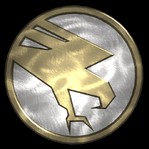In fairness, Uranus is much larger than Antarctica.
Your momma’s anus is much larger than Antarctica.
How’s it feel coming back atcha buddy?
Oedipal.

Bloody hell, I didn’t expect a friendly meme-roasting session to be educational…
My fine Sir, I extend my salutations and congratulations on your absolutely brilliant play.
Then again it could be super close and the size of a potato.
Tbf looking upward at the sky is a lot easier than taking a giant wooden coffin over thousands of miles of water to find an icy hells ape where almost nothing can survive
icy hells ape
Yeah, that’s fucking terrifying
that fucking troll on the way to the grey beards, fml.
The advantage of becoming leader of the college, thieve’s guild, nightingales, and companions before even bothering to visit Balgruff.
deleted by creator
icy hells ape
sent from my iPad
icy hells ape
That’s going in my next D&D campaign
I mean, gelugons sort of look like apes if you squint leftways.
tbf, discovering Uranus was a lot less deadly before modern icebreaking ships. Age of Sail ships did not do well down there, and the economic incentives of sealing resulted in quite a lot of casualties back in the day. Doing math and peering through telescopes is much safer.
You say this, but you’ve never seen me try to math
deleted by creator
I got a really bad crick in my neck once
Yeah. The only invention we needed was telescopic lenses in order to spot Uranus.
If our main sensory organs were sound-based or feel-based, we’d probably have discovered a lot of things before planets and stars.
The things that took a while to discover on earth, or that aren’t yet fully explored, are largely because it’s hard to see them without getting very close, which can be hard.
Building a good telescope might have been hard, but with a telescope you can see things that are millions of km away. But, because of the earth’s curvature, you can’t see Antarctica until you’re practically next to Antarctica. You can’t see the bottom of the ocean until you travel to the bottom of the ocean, or at least until you scan it with sound waves which are then converted into something you can see.
Imagine an alien that developed in the water on a planet with sub-surface oceans with ice on top. No real value for eyes, so they’re sound / touch based. Picture what it would be like to try to explore the solar system. There’s a boundary layer at the top of their “atmosphere” (the top of the ocean) that’s solid (ice), beyond that there’s some non-liquid extremely sparse stuff, until some point where no sound travels at all and there’s nothing to touch.
Reminds me of Rocky from Project Hail Mary (sort of, they didn’t live under ocean but under an extremely hostile-to-us atmosphere).
That moment where he learns about relativity is so cute. I should read the book again soon.
His initial reaction was hilariously understandable - a huge WTF? But then being a rational being with super human computational ability he started to realize that it fits all the observations.
…and then he got hit by quantum mechanics off-screen.
Yeah, that was my first thought to.
“The” Antarctica
I mean, I guess there’s only one
It’s only until we discover the second one
Is that where Santa lives?
No that’s ananarctica
No, it’s the secret location where less-cooperative elves are sent who question Santa’s work scheduling, pay rates, and anti union stance.
I assure you that Uranus has been observed many times by many people dating far back into the past, such as by Hipparchos in 2nd Century BC. They conclusively figured out exactly what it was in 1846.
Twenty centuries of wondering what it is, until someone snapped and said “listen, it’s Uranus, are you happy now?”
Well back then, people didn’t wear many clothes, so if they bent over you’d see right up their bums.
The Sirius star(s) 8000 light away was discovered before Europe.
Well, we currently know better the moon’s surface than our oceans’ bottom, so…
It’s almost like building telescopes is a bit easier than month-long marine expeditions.
Well I guess it’s not immediately apparent. But in hindsight, the kind of telescope you need to see the moon or Uranus isn’t quite the investment that a dangerous expedition to unknown lands or the bottom of the sea entails. Nor an observatory or space-bourne telescope for that matter. And you can’t use a telescope to discover a continent on earth unless you were already in space.
Yup, if I’m not mistaken, more people went on the Moon than to Challenger Deep. I’m wondering if it would be the same case if the Cold War hadn’t started the race to the Moon.
It’s like it tell my kids, you have to look under and behind things…
Is this the same “discovered” as America was “discovered” in 1492?
Actually no, I don’t think there were any people living in Antarctica… but I could be wrong.
But were there people living in the southern hemisphere who knew not to go further south because they’d reach the icy land of certain death?
There were probably people who knew that if they went further south they’d not come back. On maps locations like these used to be labeled “Here there be monsters” or something like that.
Probably not. They knew not to go further south because they’d reach the icy ocean of certain death. Because there’s no land at 60° South, the winds and currents whip around Antarctica in an uninterrupted circle and there are 100 kph winds and 10+ meter waves most of the time.
See also: “Roaring Forties,” “Furious Fifties,” and “Screaming Sixties”
This is a very human centric definition of discovery.
Penguins had been living there for millenia beforehand.
We are humans…
I was mocking the attitude that something can’t be discovered by one group of people if a different group of people already knew about it.
Columbus discovering the Americas is commonly called a “euro-centric definition of discovery”. While conveniently ignoring that literally nobody in Europe knew the Americas existed.
Don’t tell the Vikings I guess
That’s fair, that can annoy me too occasionally.
Probably no settlements, but Polynesians went all over the place so it’s not unlikely that they checked it out at some point.
https://en.wikipedia.org/wiki/Polynesian_navigation#Subantarctic_and_Antarctica
Sounds like a “probably not, but maybe.”
I’m a big fan of Polynesian sailing and would argue that they were every bit the equal of Age of Sail Europeans, if not superior (even despite lacking compass technology). However, their boats and clothing were generally pretty optimized for the tropics, not polar conditions.
I, for one, wouldn’t want to be in the Screaming Sixties wearing a cloak and no pants exposed on the deck of a catamaran, no matter how many seal pelts said cloak was made out of. I can only assume any sane wayfinder would say “fuck this shit” and turn North well before hitting the Antarctic shore.
I don’t know about you, but I find seeing things to be much easier when there isn’t a planet obscuring it.
Piri reis knew of Antarctica back in the 16th century or something I unno I am no earth scientist
Ooh old cartography I can actually call semi bullshit on this. Basically we knew about a fuckoff big landmass we now call Antarctica (then hypothesized to be Terra Australis) due to the ocean currents around it, but we kept fucking up its location for some reason. Misidentification of Antarctica got so bad that Australia was the most nothern part of it hence why the naming is wrong.
Also a lot of maps made Tierra del Fuego look like it was part of the at the time hypothesized Terra Australas, as I said the misidentification problem got real fucking bad at times. But yeah we knew there was a continent or somethijg down there we just couldnt get to the damned thing because it was too hazardous.
No idea wtf that’s supposed to translate as.
I read about the Antarctic. They kept running into walls of ice before they could find/see it.
To get near Antarctica while sailing south, you have to first cross what seems like a wide barrier of perpetually stormy seas with huge rogue waves.
In fact, it was in one of these storms that veered more north than usual, that a sailing vessel - can’t remember if it was British, Dutch or Portuguese - got picked up, then tossed and turned for days, and once it was finally over, the crew found themselves in extremely cold seas, very similar to those at northern latitudes.
But you can see one in your backyard sometimes.
Oh, you have your own The Antarctica too?














